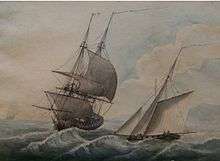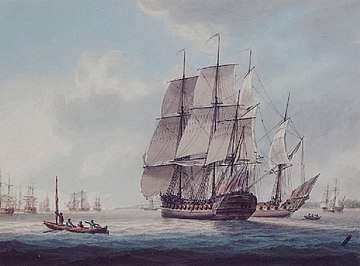Samuel Atkins
Samuel Atkins (fl. 1787–1808), was a British marine painter.

Atkins contributed to the Royal Academy between 1787 and 1796. From 1796 to 1804 he was in the East Indies, when he returned to England, and continued to exhibit until 1808. He worked in oil and water-colour. The water-colour collections of South Kensington and the British Museum have each an example of his work. It is rather early in manner, low in tone, quiet, and truthful. A picture of ‘Shakespeare's Cliff, Dover,’ has been engraved after him by R. and D. Havell. Nagler attributes to this Samuel Atkins the originals of two engravings of sea-subjects after ‘— Atkins:’ ‘Ships in Sight of Harbour,’ engraved in aquatint by H. Merke; and ‘A Sea Piece,’ by F. Janinet. A water-colour drawing also, ‘Seascape with Ships,’ he gives to this painter.
Gallery
 Unidentified Royal Navy frigate or sloop of war (ca 1787-1800), in the collection at The Mariners' Museum
Unidentified Royal Navy frigate or sloop of war (ca 1787-1800), in the collection at The Mariners' Museum Unidentified British Naval ship in the collection at The Mariners' Museum
Unidentified British Naval ship in the collection at The Mariners' Museum Brig in a breeze off a harbor in the collection at The Mariners' Museum
Brig in a breeze off a harbor in the collection at The Mariners' Museum The East Indiaman Woodford near Plymouth
The East Indiaman Woodford near Plymouth
External links
![]()